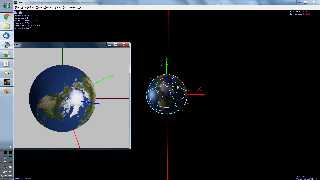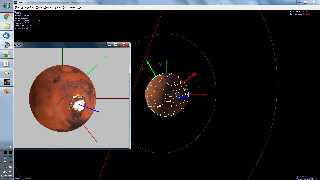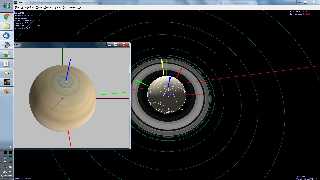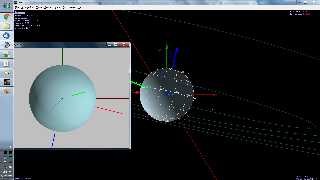On 9/26/2018 4:26 PM, Le_Forgeron wrote:
> Le 26/09/2018 à 19:45, Mike Horvath a écrit :
>> Thanks again for the help!
>>
>> A couple of comments:
>>
>> 1. What is the significance of the long yellow cylinder?
>
> It is the axis around which the planet get rotated by 90-delta degree,
> to place its pole axis in space.
>
Okay thanks.
>>
>> 2. The render of "step.pov" you posted still does not look like the
>> Celestia screenshot. The Celestia screenshot in my last post is what the
>> scene *should* look like, and the scene is off by quite a bit. I'm not
>> sure what's wrong, either.
>
> I'm still not sure about your ecliptic correction, can you try to see
> what happen when you remove it ?
Conversions to/from ecliptic coordinates and equatorial coordinates
(ICRF frame) are described here:
https://en.wikipedia.org/wiki/Ecliptic_coordinate_system#Conversion_between_celestial_coordinate_systems
as well as in step #6 here:
https://ssd.jpl.nasa.gov/txt/aprx_pos_planets.pdf
It seems to be a simple rotation around the x axis.
> Also, check your camera parameter, there was a bit of comments and I
> might have touched it.
>
The camera also seems fine, since the red, green and blue poles are all
pointing in the correct directions.
> Loonking at the French wikipedia for equatorial coordinate system,
>
> https://fr.wikipedia.org/wiki/Syst%C3%A8me_de_coordonn%C3%A9es_%C3%A9quatoriales
>
> there is a note about converting alpha to latitude/time.
>
> +alpha is to the east.
>
> English version has even an animation:
>
> https://en.wikipedia.org/wiki/Equatorial_coordinate_system
>
> Is the mismatch about the pole ?
> Or the placement of continents ?
>
> I'm not sure about the axis of obliquity, especially after the transform
> of alpha & delta.
I've attached four comparison views of the POV-Ray output versus
Celestia. Maybe they will illuminate which rotations are being done
incorrectly?
The dark red, green and blue cylinders represent the ecliptic frame
axes. The bright red, green and blue cylinders represent the body frame
axes. If you ignore the axes, some of the renders look "close" to correct.
Mike
Post a reply to this message
Attachments:
Download 'celestia_earth_01.jpg' (217 KB)
Download 'celestia_mars_01.jpg' (245 KB)
Download 'celestia_saturn_01.jpg' (309 KB)
Download 'celestia_uranus_01.jpg' (240 KB)
Preview of image 'celestia_earth_01.jpg'

Preview of image 'celestia_mars_01.jpg'

Preview of image 'celestia_saturn_01.jpg'

Preview of image 'celestia_uranus_01.jpg'

|




![]()